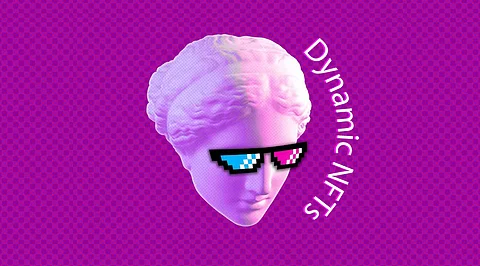

Dynamic NFTs (dNFTs) have undeniably grabbed the internet by storm, but they are not all the same NFTs can take several forms, including dynamic NFTs (dNFT).
Once produced and minted, a static NFT will always remain the same, implying that the metadata it references cannot be changed. This isn't inherently a negative thing, but it might limit the creator's or owner's ability to modify things around. Perhaps they wish to tweak a certain NFT attribute or update some information. This is not possible with a static NFT.
Then there are dynamic NFTs (dNFTs).
Of course, a dynamic NFT is still a non-fungible token, which means it is a one-of-a-kind blockchain asset used to tokenize anything else, such as a drawing, movie, music, or similar. However, as the name implies, dynamic NFTs have several advantages over static NFTs. They are, in short, engineered to be more active.
Smart contracts are used to operate a dynamic NFT. Smart contracts are programs that perform a procedure as long as the set parameters are satisfied. These are particularly popular on the Ethereum blockchain and are currently relevant in dynamic NFTs. Smart contracts, which are incorporated within the NFT, are used to access both on-chain and off-chain data while generating a dynamic NFT. The smart contract is critical in allowing the dynamic NFT's properties to vary. To modify, the NFT requires external data. Blockchains are unable to access external data directly and must rely on a blockchain oracle to do so. It is the smart contract that gets data from Oracle, which is subsequently utilized to modify or update the database.
Smart contracts are also used to create dynamic NFTs. They are connected to a set of information when minted, however, unlike conventional NFTs, this may be altered if necessary.
Both dynamic and static NFTs have compelling applications, while the former may outperform the latter in many circumstances. Dynamic NFTs, for example, can provide a greater level of user involvement or interaction. This is because dynamic NFTs may be modified and updated to better meet customer demand and can generate buzz by introducing new features. Furthermore, dynamic NFTs are better suited to modeling physical assets. A dynamic NFT, for example, might be used to represent real estate. Because real estate values are always changing, the smart contract embedded in the NFT may retrieve external data on these price changes and communicate it to the NFT.
In terms of real-world data, dynamic NFTs might be utilized to validate identification. While static NFTs may be used in this scenario, if a person changes their name or gender, or wishes to update their identity photo, a dynamic NFT may do so. Because of their programmable characteristics, dynamic NFTs also provide a higher level of user control and can provide artists with the opportunity to earn cash through royalties depending on continuing user involvement with their music or films. Dynamic NFTs may also add to total NFT loyalty. Users are more likely to remain engaged in a certain NFT collection or project if they know there will be more updates and advances in the future.
Join our WhatsApp Channel to get the latest news, exclusives and videos on WhatsApp
_____________
Disclaimer: Analytics Insight does not provide financial advice or guidance. Also note that the cryptocurrencies mentioned/listed on the website could potentially be scams, i.e. designed to induce you to invest financial resources that may be lost forever and not be recoverable once investments are made. You are responsible for conducting your own research (DYOR) before making any investments. Read more here.
